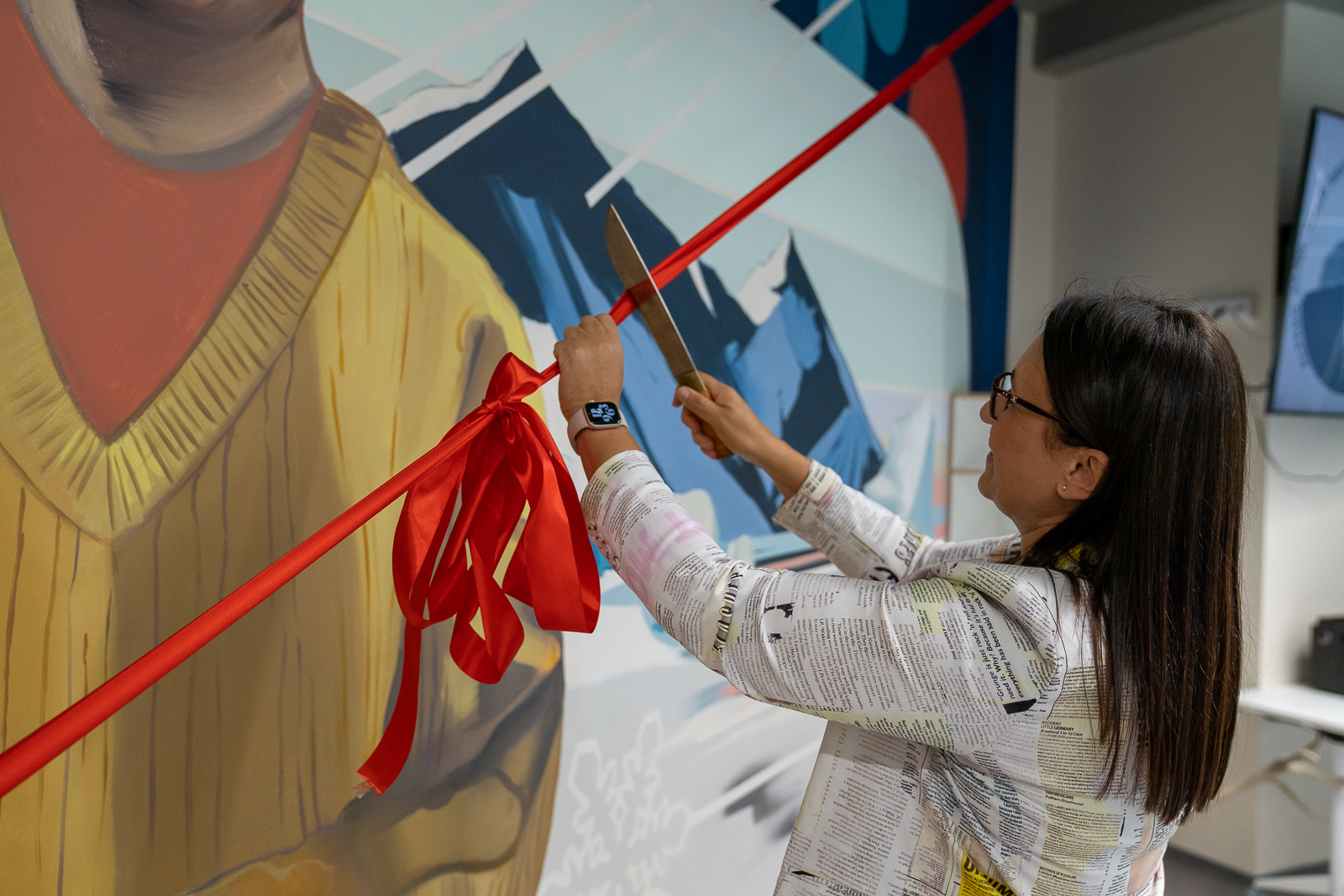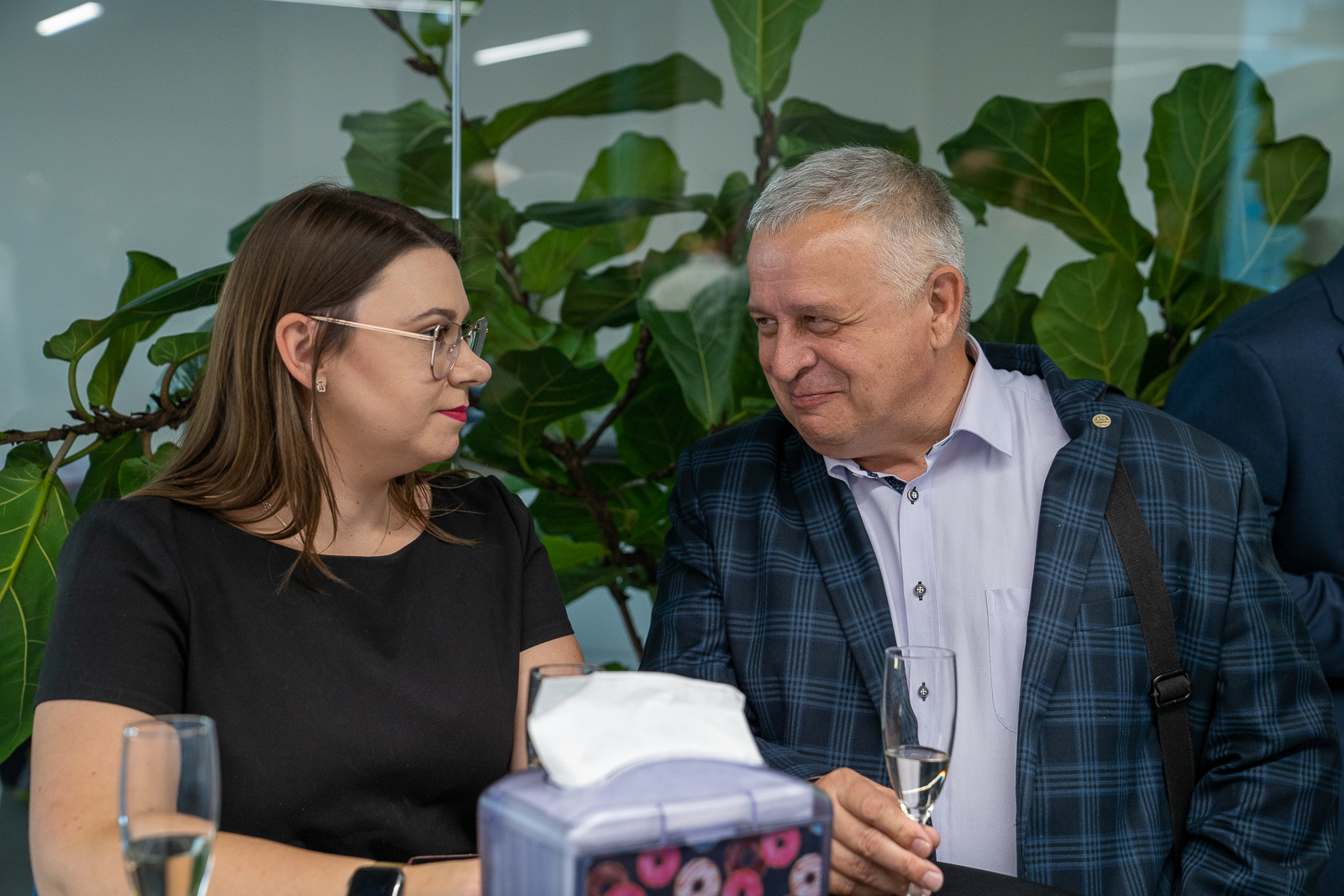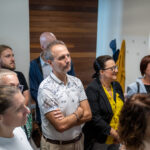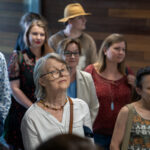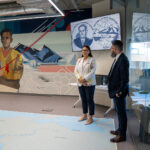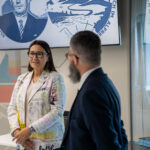
The Cold Regions Research Centre at the University of Wrocław is opened!
The Alfred Jahn Cold Regions Research Centre was opened on the 29th of September, 2023, in the building of the Wrocław University Library. The Centre, directed by prof. Mateusz Strzelecki, is an interdisciplinary unit functioning in the organisational structure of the Institute of Geography and Regional Development at the Faculty of Earth Sciences and Environmental Management. The key mission of the Centre is to develop research on environmental changes in cold regions, especially in permafrost, periglacial, and paraglacial environments. The Centre supervises and determines research directions on our polar station on Spitsbergen – the Stanisław Baranowski Polar Station.
A modern space of the Centre is to provide scientists with conditions for the development of research and teaching co-operation and to create a place for dialogue between representatives of exact and earth sciences, social studies and humanities, and technical sciences in the field of research on natural, socio-economic, and cultural environment of cold regions. The research is carried out at the University of Wrocław in co-operation with other research centres in Wrocław, in Poland, and around the world. Researchers of cold regions will find not only a seminar room, open space for young scholars, but also a warehouse for scientific equipment, office space for visiting researchers, and a library with the most valuable books on polar and periglacial topics from the collection of prof. Alfred Jahn. To promote and preserve the research heritage of its patron is an important aim for the Centre. Alfred Jahn was a great Polish geographer and polar explorer, and a legendary Rector of the University of Wrocław who sided with student protesters in March, 1968, exposing himself to repressions from the communist regime.
The ambition of the originator of the Centre, prof. Strzelecki, is to use the new headquarter to meet science with art inspired by cold regions. The first result of this co-operation is a mural by Sebastian Bożek, which depicts prof. Jahn and elements of landscapes and natural processes, such as permafrost, glaciers flowing into the sea, icebergs, snow cover, tundra geoecosystems, etc., which are studied by the Centre’s associates.
Apart from the authorities of the University, the Faculty, and the Institute, administration employees involved in the investment also participated in the opening ceremony, as well as scholarly partners from other universities in Wrocław and the most important polar centres in Poland. Among the guests there were also: dr Dariusz Ignatiuk, the President of the Polish Polar Consortium, prof. Piotr Głowacki, the President of the Committee on Polar Research of the Polish Academy of Sciences, prof. Marek Lewandowski, the Plenipotentiary of the Ministry of Education and Science for Polar Issues.
Translated by Emilian Olsiewicz (student of English Studies at the University of Wrocław) as part of the translation practice.














